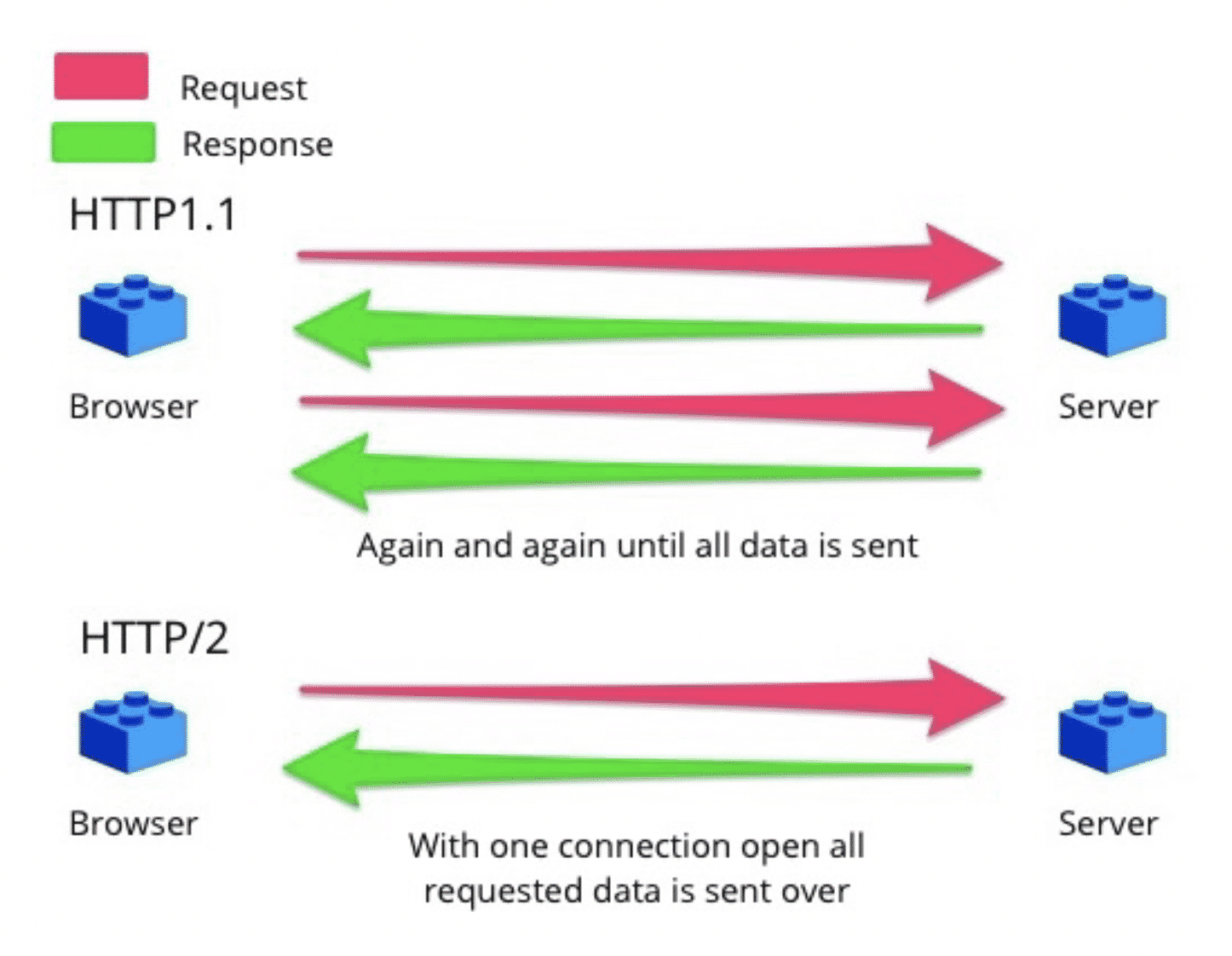What is HTTP/2?
HTTP/2 is a newer protocol for transporting data that will drastically
speed up the web and can help your SEO. The ‘old’ HTTP1.1 protocol
only allows web servers to send files down a single line one at a time, and
that line has to open and close after each file has been sent – a process
that can take ages. HTTP/2 offers a dramatic speed boost as the line can
be kept open and a lot of stuff can be sent at once.
How HTTP/2 works
HTTP/2 uses new technologies to take away one of the web’s biggest bottlenecks by introducing full multiplexing connections. Servers can now open a single connection with a browser and keep sending all a website’s files until everything is done. After that, the connection closes and the browser can render the site.
The process
Whenever you click on a link to visit a site a request is made to the server. The server answers with a status message (header) and a file list for that website. After viewing that list, the browser asks for the files one at a time. The difference between HTTP 1.1 and HTTP/2 lies in what happens next. Say you want a new LEGO set. First, you go to the store to buy your LEGO. When you get home, you open the box and look at the instructions, which tell you what you have to do: one brick at a time. So for every brick you have to look at the instructions to see which brick to use next. The same for the next brick, and so on. This back-and-forth keeps happening until you have finished the entire LEGO set. If your set has 3,300 bricks, that’ll take quite a while. This is HTTP1.1 – the older standard – and still in use on many shared servers – like Godaddy, BlueHost, etc.
With HTTP/2 this changes quite a bit.
You go to the store to pick up your box. Open it, find the instructions and you can ask for all the bricks used on one section of the LEGO set. You can keep asking the instructions for more bricks, without having to look at the manual. “These bricks go together, so here they are.” If you want it really quickly, you could even get all the bricks at once so you can build the set in an instant.
 HTTP/2 can handle many more things at once
HTTP/2 can handle many more things at once
HTTP/2 has a lot of cool features that can help speed up your loading times. The most important one, of course, is full multiplexing, which means that multiple requests can happen at the same time over a connection that stays open for the duration of the transfer process. Another cool thing is Server push; this starts as one request but when the server notices the HTML requires several assets, it can send these all at once without asking.
Like I said earlier, with HTTP1.1 a browser requests a site -> server sends a header back -> that header contains a status message and HTML body-> for every file needed to build the site, a single connection has to be opened and closed repeatedly. If a piece of this puzzle acts up it can hold up the rest, slowing the process down even further. This is called head-of-line blocking.
Site speed is important for SEO – and Usability
Site speed has been an SEO ranking factor for years. Now, with the introduction of the mobile-first index, Google will take a critical look at the loading speed of your mobile site. Sites have only gotten bigger over the past few years, and big sites have lots of assets like HTML, JavaScript, CSS, images and so on, which all mean longer loading time. There are some things you can do to improve site speed by fine-tuning how your server handles these things, but at its core, HTTP1.1 isn’t a very efficient process.
HTTP/2 makes this process a lot easier to manage for servers and browsers, therefore drastically speeding things up – and HTTP/2 is ALREADY ACTIVE ON OUR HOSTING SERVERS. (Also keep in mind that the advent of HTTP/2 does not retire HTTP1.1 as some browsers may still use the old protocol as
fallback.)

